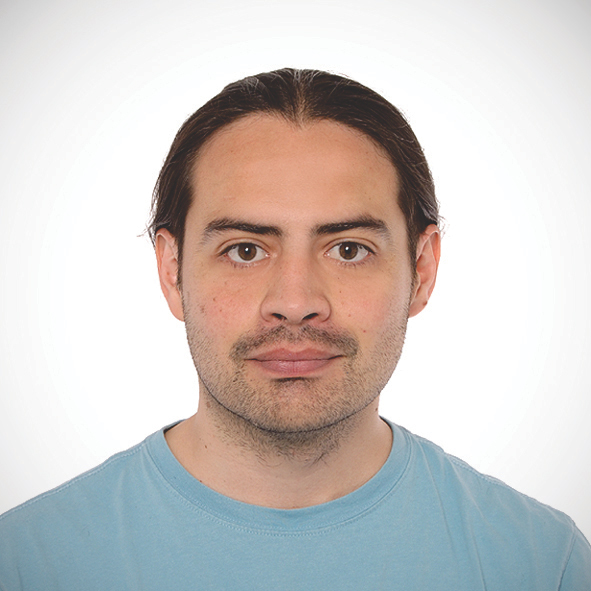Neurons out of sync

Jorge Jaramillo, first author of the study Jorge Jaramillo, 2014
This morning, shortly after waking up: did I first go to the bathroom and then turned on the coffee machine in the kitchen—or vice versa? Sometimes you are uncertain whether you have followed an everyday routine as usual or not.
The brain has a certain mechanism of storing sequences of spatial events. Part of this mechanism can now be explained by a reasearch team headed by Professor Richard Kempter at the Bernstein Center Berlin and the Humboldt-Universität in Berlin.
The study, entitled: “Modeling Inheritance of phase precession in the hippocampal formation”, has been published in The Journal of Neuroscience. Using a computer model, the scientists are able to predict how some nerve cells may stimulate specific neurons in other brain regions to fire in a specific rhythm.
To analyze how the rhythm comes about, the researchers simulated the behavior of nerve cells in the diverse brain regions on the computer. The result of their model: the rhythm may be passed on from one region to the next and does not need to emerge individually in the respective areas.
“Spatial sequences, such as walking routes, are processed in the hippocampus,” says Jorge Jaramillo, first author of the study. The hippocampus is a structure in the mammalian brain, which is crucial for the explicit memory (facts, events, sequences). Here are neurons, which are responsible for the so-called “place field”: They fire when we find ourselves at a particular point in space.
“If we measure the entire brain activity using EEG (electroencephalography), you see very typical activity oscillations in the hippocampus, the so-called theta rhythm.” Nerve cells that are in the process of encoding spatial information start to fire offset in time to this rhythm. This process creates a complex spatial-temporal pattern of electrical brain activity in the brain, which has an important role in the storage of spatial information. The phase-shifted rhythm has been observed in different subregions of the hippocampus – until now it had been unclear how it arises in the individual areas.
“Ultimately, it allows us to better understand other aspects of memory too, not only spatial, as the basic principles are similar,” says Jaramillo.
The Bernstein Center Berlin is part of the National Bernstein Network Computational Neuroscience in Germany. With this funding initiative, the German Federal Ministry of Education and Research (BMBF) has supported the new discipline of Computational Neuroscience since 2004 with over 180 million Euros. The network is named after the German physiologist Julius Bernstein (1835-1917).
Contact:
Prof. Dr. Richard Kempter
Department of Biology
Institute for Theoretical Biology (ITB)
Humboldt-Universität zu Berlin
Philippstr. 13, Building number 4 (Ostertaghaus)
10115 Berlin
Tel: +49 (0)30-2093-98404
Email: r.kempter@biologie.hu-berlin.de
Original publication:
J. Jaramillo, R. Schmidt, R. Kempter (2014): Modeling Inheritance of Phase Precession in the Hippocampal Formation. The Journal of Neuroscience, 34(22): 7715 – 7731.
doi: 10.1523/JNEUROSCI.5136-13.2014
Media Contact
All latest news from the category: Life Sciences and Chemistry
Articles and reports from the Life Sciences and chemistry area deal with applied and basic research into modern biology, chemistry and human medicine.
Valuable information can be found on a range of life sciences fields including bacteriology, biochemistry, bionics, bioinformatics, biophysics, biotechnology, genetics, geobotany, human biology, marine biology, microbiology, molecular biology, cellular biology, zoology, bioinorganic chemistry, microchemistry and environmental chemistry.
Newest articles

Properties of new materials for microchips
… can now be measured well. Reseachers of Delft University of Technology demonstrated measuring performance properties of ultrathin silicon membranes. Making ever smaller and more powerful chips requires new ultrathin…

Floating solar’s potential
… to support sustainable development by addressing climate, water, and energy goals holistically. A new study published this week in Nature Energy raises the potential for floating solar photovoltaics (FPV)…

Skyrmions move at record speeds
… a step towards the computing of the future. An international research team led by scientists from the CNRS1 has discovered that the magnetic nanobubbles2 known as skyrmions can be…





















